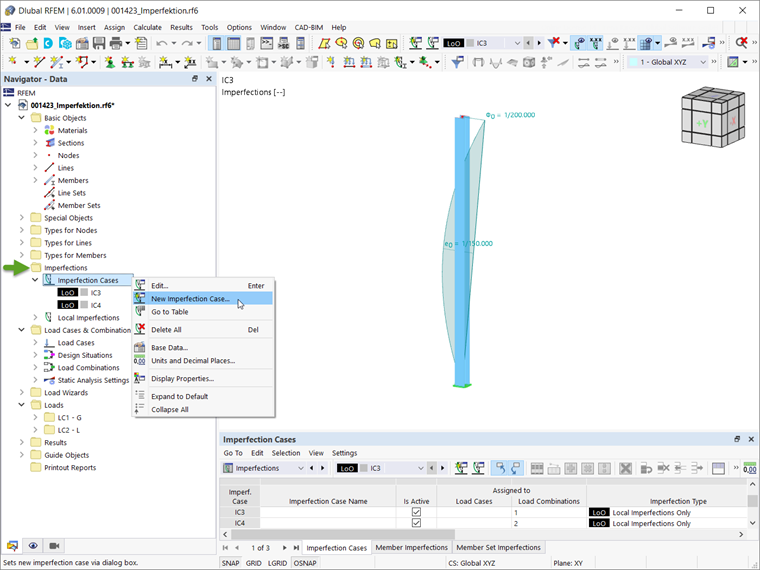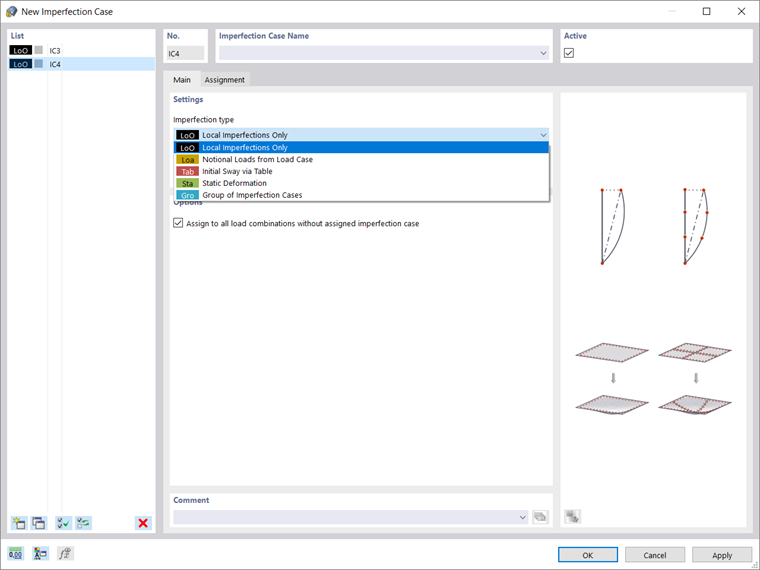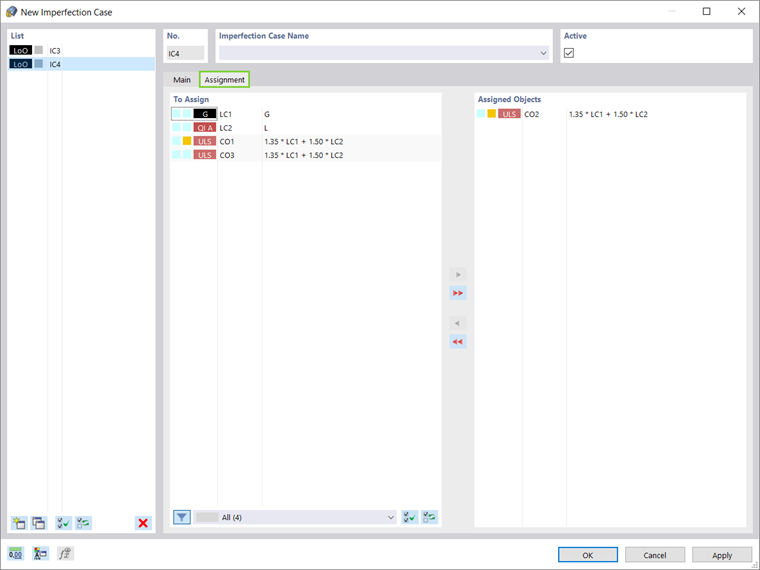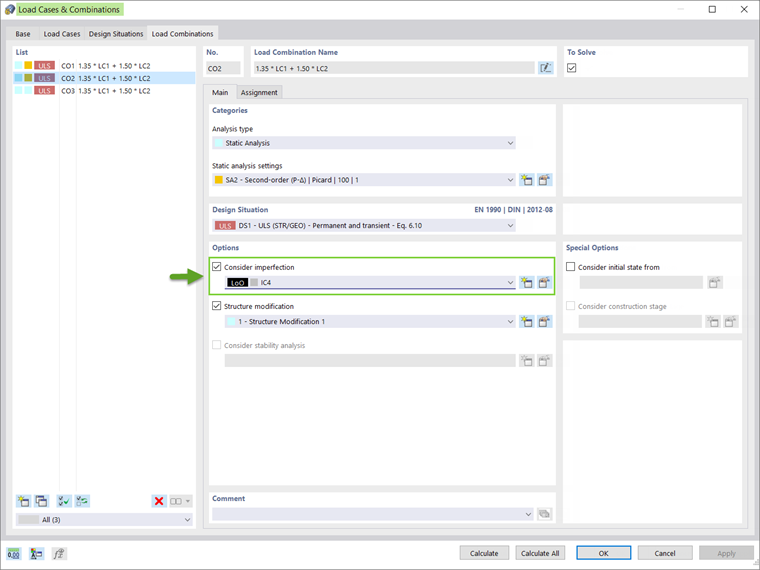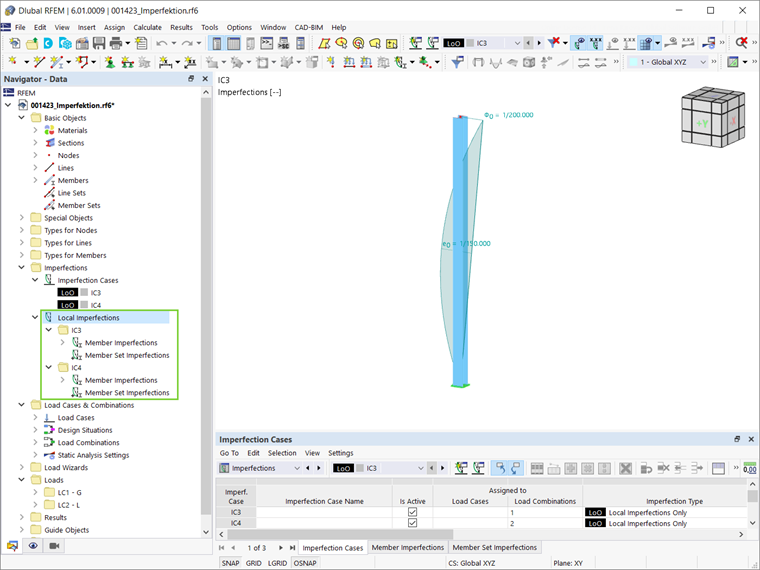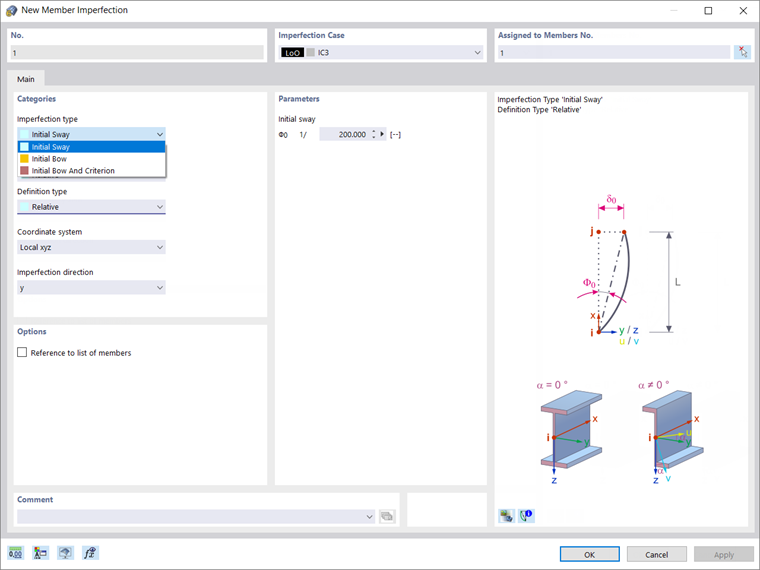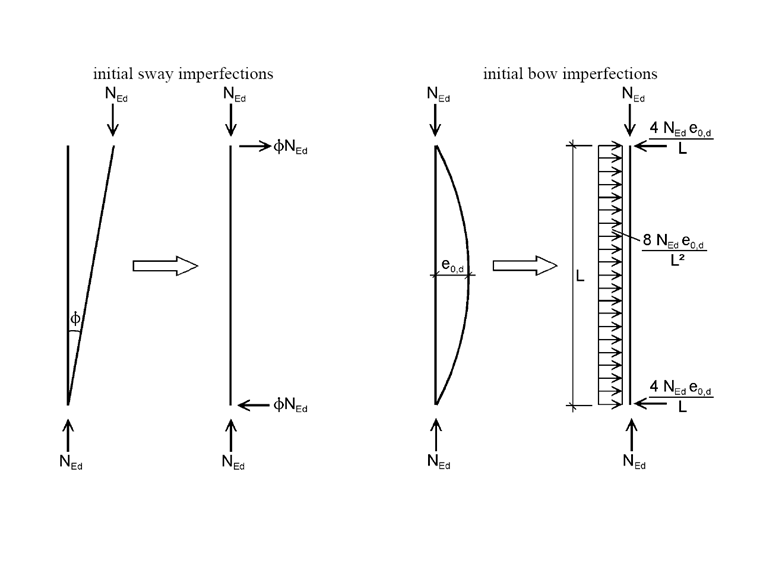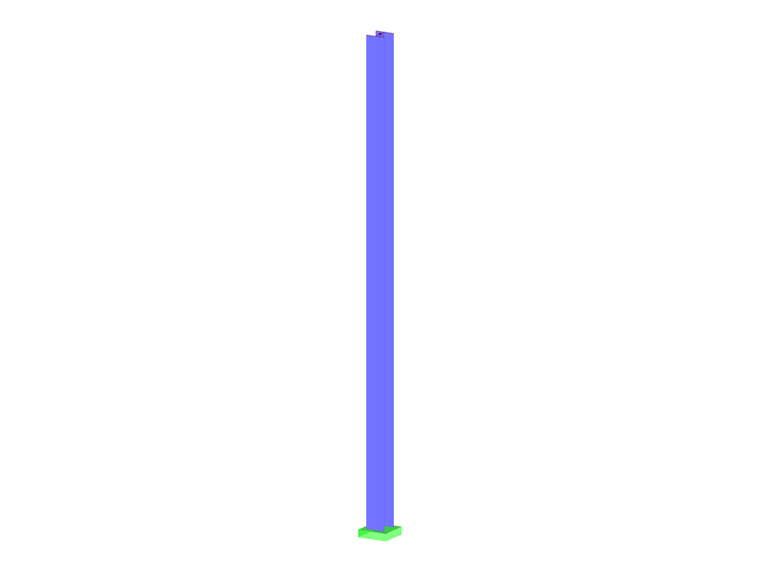As a matter of fact, Eurocode 3 specifies that consideration of imperfections according to the second-order analysis is necessary as of a critical load smaller than 10 for the elastic analysis. This nonlinear calculation in connection with the deviation of the structural component from its ideal shape results in an increase of the internal forces, and deformations as compared to a linear calculation.
These increased internal forces and deformations can be used in most cases to obtain a considerably more efficient design of the structural component compared to a simple design in which the imperfection of the structural component is taken into account by increase factors.
Imperfection Cases
In RFEM 6, imperfections are related to imperfection cases that can be defined using the Data tab of the navigator as shown in Image 1. The imperfection type can be set in the Imperfection Case window. The available types are: local imperfections, notional loads from a load case, initial sway via table, static deformation, and group of imperfection cases (Image 2). To represent the member's deviation from its ideal shape, it is important to choose local imperfections as an imperfection type.
In the Assignment tab of the same window, the imperfection case can be assigned to existing loads and/or load combinations (Image 3). Alternatively, the imperfection case in terms of load cases and/or load combinations can be considered using the Load Cases and Combinations window (Image 4).
Member Imperfections
In RFEM 6, the deviation of the structural components from their ideal shape can be represented by Member / Member Set imperfections as a local imperfection type (Image 5). These member imperfections can be defined as an initial sway or an initial bow (Image 6). The initial sway simulates a component as inclined over its entire length, whereas the initial bow simulates a straight structural element as a bow (Image 7). For the latter, activity criteria can be also set (for example, always, according to standard, or with respect to manually defined member slenderness).
Both the initial sway and the initial bow can be defined as absolute or relative values. In addition, they can be defined according to the standards available for selection under "Definition Type". Finally, the coordinate system (local or principal) and the direction with respect to which the imperfection is simulated should be selected.
Final Remarks
In RFEM 6, the deviation of a structural component from an ideal shape can be simulated by member imperfections. First, it is necessary to create an imperfection case with "Local Imperfections" as the imperfection type and relate them to existing loads and/or load combinations. Later, the member imperfections can be defined in terms of separate imperfection cases. These imperfections can be represented by initial sway or initial bow with respect to the member's local or principal coordinate system. For the latter, activity criteria can also be set.
